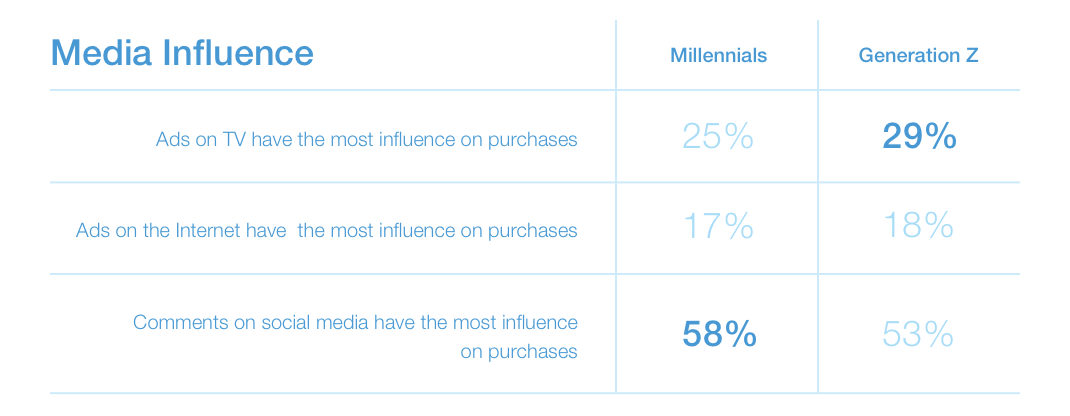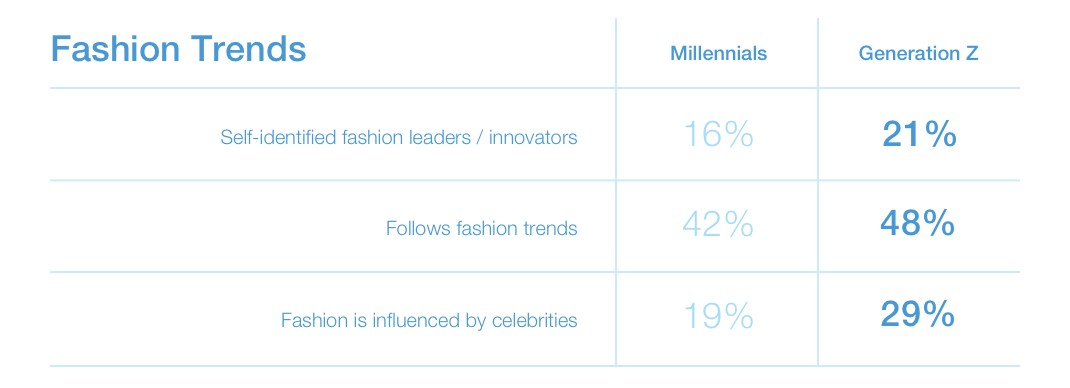Consumer-facing brands have been obsessed with Millennials over the past few years, especially in the retail world. The news has been tracking their every move, and companies have been targeting Millennials, hoping to win this segment as customers. But now there’s a new group that companies are starting to fixate on – Generation Z. This younger generation, with the oldest just shy of 20, is already snagging the headlines:
Move Over, Millennials, Here Comes Generation Z
5 Ways that Gen Z Is Changing the World
Forget Millennials: Time to Prepare for Generation Z
Generation Z, the Next Big Retail Disruptor
Retailers are beginning to scramble to find out who these individuals are, and understand more about their behaviors and personality. So what can CivicScience tell us about this younger generation’s shopping habits, and how do they differ from the shopping behaviors of Millennials?
In our first Millennial vs. Gen Z installment (more to come in the next few weeks), we compared how Millennials (18-34 year olds) and Gen Z (13-17 years old since we only poll those 13 and older) answered a number of shopping questions in our database (since January of 2015) in order to identify their shopping habit differences. This will allow retailers to better understand Gen Z and the messages that will interest this younger generation.
Here were a few of the top differences we discovered.
Millennials are more price sensitive.
In general, Millennials seem to show more price-sensitive behaviors than Gen Z.
- Millennials are 29% more likely to always compare prices before making purchases.
- Millennials are 18% more likely to be price-conscious when it comes to clothing.
The reason for this behavior? Given the younger age of the Gen Z folks, there’s a good chance their parents are still supporting them and making many of their purchases, so they may not be as inclined to find the best price. However, it will be interesting to track whether their behaviors change as they become more financially independent.
Millennials are more likely to be market mavens.
Millennials are only slightly more likely than Gen Zers to be early adopters, however, there’s a bigger gap when looking at their product evangelizing tendencies. Millennials are 40% more likely to tell family and friends about a product they are happy with; though, they are also more likely to tell family and friends when they are not happy with a product.
As long as Millennials are happy with a product, they could be a great source of word-of-mouth marketing. Gen Z doesn’t share their product experience as much with family and friends, so retailers and brands must find innovative ways to get this younger generation to spread the word about their products. Retailers should consider offering free items or product discounts in return for following them on Instagram or Snapchat. This may entice more Gen Z shoppers to interact with their brand and evangelize about their products on social media sites. And we know social media is important to them…
Social media is the best way to reach and influence both generations.
Over half of Millennials and Gen Zers say they are most influenced by social media rather than ads on TV or the Internet. It’s a bit surprising to see Millennials are influenced more by social media than Gen Z:

Gen Z is slightly more likely to be influenced by TV ads and are slightly less likely to be influenced by social media. We come back to why this may be occurring in a minute, but let’s first cover what social media sites they favor. It’s still the best way to reach the younger generations.
Gen Z is more active on visual social media sites.
The social network behemoth Facebook seems to be losing traction with younger generations – 55% of Millennials use Facebook daily, compared to 31% of Gen Z. Facebook is tied with Instagram as the top social network Gen Zers uses daily. After Facebook and Instagram comes Snapchat and Twitter. Given the top sites among this generation, it’s evident that they are attracted to and fans of more visual social media sites.

One thought as to why Gen Z is less influenced by social media than Millennials: many retailers are a bit behind when it comes to advertising and developing a strong presence on Snapchat and Instagram. Those social sites are used by over a quarter of Gen Z consumers on a daily basis, but due to brands lower activity on those sites, Gen Z may not be as influenced as Millennials (who are much more active on Facebook) by social media.
Gen Z is more interested in fashion trends.

Generation Z is definitely more interested in fashion. They are 31% more likely than Millennials to be (self-identified) fashion leaders/innovators and are 14% more likely to follow fashion trends. Gen Z will probably be more interested in fashion-forward products. Advertising the latest trends and partnering with fashion icons/celebrities may help get more Gen Z shoppers paying attention to their brand; especially since this younger generation is 53% more likely than Millennials to say their fashion decisions are influenced by what celebrities wear. Also, implementing a fashion blog could be a good way to generate interest among these shoppers.
Their brand preferences vary.
So what apparel brands and retail stores does each generation favor? Knowing this information can help inform brands what age groups they should spend time targeting:

Many of the brands, such as Hollister and American Eagle, actively target younger age groups, so it isn’t surprising to see those brands higher on Gen Z’s list. However, it’s interesting to see the favorability breakdown of brands like Lululemon and Nike. It looks like Nike has a strong hold among Gen Zers. When it comes to brand loyalty, almost one in four (24%) Millennials and Gen Zers are very loyal to their favorite brands. However, that doesn’t mean this list won’t change in the next few years. Consumers’ preferences, especially at a younger age, change frequently. All the more reason to pay attention to these consumers and the changing trends.
Retailers now have the challenge of targeting and advertising to a whole new generation – Generation Z. But it isn’t just retailers. Many companies and brands should better understand this growing generation. Even though Gen Z is on the cusp of becoming as popular as or more popular than Millennials, there is still very little known about this consumer group. However, retailers and brands shouldn’t forget Millennials just yet. They are still the largest demographic group and ultimately have more spending power than Gen Z. But it’s never too early to start planning.
In the coming weeks we will report on various other habits of Millennials and Gen Z – such as their media consumption and technology usage. Check back to see what else we can find out about this popular group.








